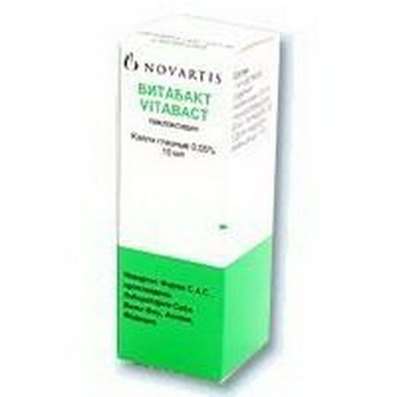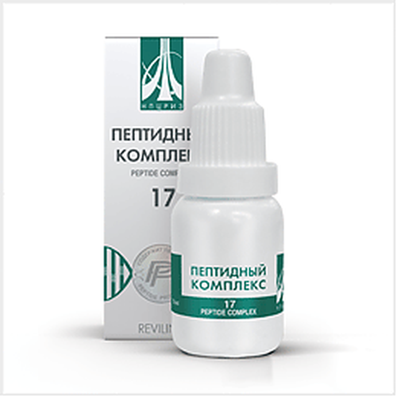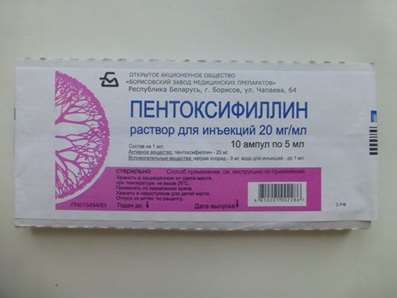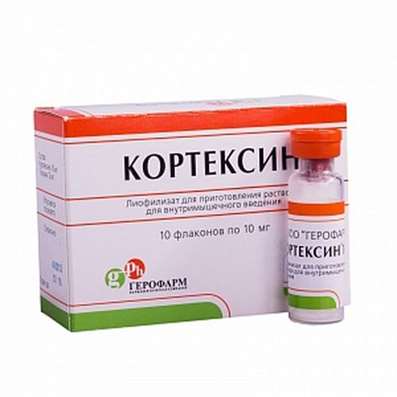Instruction for use: Euthyrox
I want this, give me price
Active substance Levothyroxine sodium
ATX Code H03AA01 Calcitonin
Pharmacological groups
Synthetic thyroid hormone [Thyroid and parathyroid hormones, their analogs and antagonists (including antithyroid agents) / 67 /]
Nosological classification (ICD-10)
C73 Malignant neoplasm of thyroid
Thyroid cancer, Thyrotropin-Dependent Thyroid Carcinoma, Anaplastic thyroid cancer, Thyroid carcinoma, Medullary thyroid cancer, Thyroid tumors, Papillary thyroid cancer
E03.9 Unspecified hypothyroidism
Hypothyroidism, Hypothyroid conditions, Thyroid hypothyroidism, Diagnosis of hypothyroidism, Simple goiter, Hypothyroid edema,Wolf-Chaikoff effect, Congenital hypothyroidism, Secondary hypothyroidism, Hypothyroid obesity, Hypothyroid status, Obstructive hypothyroidism
E05.0 Thyrotoxicosis with diffuse goiter
Goiter toxic diffuse, Toxic goiter, Diffuse thyrotoxic goiter, Graves disease, Diffuse toxic goiter, Goiter diffuse toxic, Parry's disease, Flanyani disease, Von Bazedova's disease, Toxic diffuse goiter
E07.8.0 * Euthyroid syndrome
Goiter after thyroid resection, Recurrence of goiter after resection of the thyroid gland, Euthyroid goiter, Euthyroid hyperplasia of the thyroid gland
E91 * Diagnosis of endocrine system diseases
Diagnosis of hypogalactia, Diagnosis of thyroid suppression, Diagnostic test of thyroid function, Diagnosis of hypothyroidism, Diagnosis of disorders of gonadotropic pituitary gland function, Thyroid scintigraphy test, Diagnostics of pheochromocytoma
Z100 * CLASS XXII Surgical practice
Abdominal surgery, adenomectomy, Amputation, Coronary angioplasty, Angioplasty of the carotid arteries, Antiseptic skin treatment for wounds, Antiseptic Hand, Appendectomy, atherectomy, Balloon coronary angioplasty, Vaginal hysterectomy, The coronary bypass, Interventions in the vagina and cervix, Interventions on the bladder, Intervention in the mouth, Restoration and reconstructive surgery, Hand hygiene of medical personnel, Gynecologic surgery, Gynecological intervention, Gynecological surgery, Hypovolemic shock during operations, Disinfection of purulent wounds, Disinfection of wounds edges, Diagnostic intervention, Diagnostic procedures, Cervical Diathermocoagulation, Long-surgery, Replacing the fistula catheters, Infection in orthopedic surgery, Artificial heart valve, cystectomy, Short-term outpatient surgery, Short-term operation, Short surgical procedures, Krikotireotomiya, Blood loss during surgery, Bleeding during surgery and in the postoperative period, Kuldotsentez, laser photocoagulation, laser coagulation, retinal laser coagulation, Laparoscopy, Laparoscopy in Gynecology, CSF fistula, Small gynecological operations, Small surgical procedures, Mastectomy and subsequent plastic, mediastinotomy, Microsurgical operations on the ear, Mukogingivalnye operation, suturing, Minor surgery, neurosurgical operation, Immobilization of the eyeball in ophthalmic surgery, testectomy, pancreatectomy, Perikardektomiya, The period of rehabilitation after surgery, The period of, convalescence after surgery, Percutaneous transluminal coronary angioplasty, Pleural thoracentesis, Pneumonia postoperative and posttraumatic, Preparation for surgical procedures, Preparation for surgery, Preparation of the surgeon's hands before surgery, Preparation of the colon for surgical procedures, Postoperative aspiration pneumonia in neurosurgical and thoracic surgery, Postoperative nausea, Postoperative bleeding, postoperative granuloma, postoperative shock, The early postoperative period, myocardial revascularization, Radiectomy, gastric Resection, bowel resection, uterine Resection, liver Resection, enterectomy, Resection of part of the stomach, Reocclusion of the operated vessel, Bonding tissues during surgical procedures, Removal of sutures, Condition after eye surgery, Condition after surgery, Condition after surgery in the nasal cavity, Condition after gastrectomy, Status after resection of the small intestine, Condition after tonsillectomy, Condition after removal of the duodenum, Condition after phlebectomy, Vascular surgery, Splenectomy, Sterilization of surgical instruments, Sterilization of surgical instruments, sternotomy, Dental surgery, Dental intervention in periodontal tissues, strumectomy, Tonsillectomy, Thoracic surgery, total gastrectomy, Transdermal intravascular coronary angioplasty, Transurethral resection, Turbinektomiya, Removal of a tooth, cataract surgery, Removal of cysts, tonsillectomy, Removal of fibroids, Removing the mobile primary teeth, Removing polyps, Removing broken tooth, Removal of the uterus body, Removal of sutures, Urethrotomy, Fistula likvoroprovodyaschih ways, Frontoetmoidogaymorotomiya, Surgical infection, Surgical treatment of chronic limb ulcersm, Surgery, The surgery in the anal area, The surgery on the colon, Surgical practice, The surgical procedure, Surgical interventions, Surgery on the gastrointestinal tract, Surgical procedures on the urinary tract, Surgical procedures on the urinary system, Surgical intervention of the genitourinary system, Surgical procedures on the heart, Surgical manipulation, surgery, Surgery on the veins, Surgical intervention, Vascular surgery, Surgical treatment of thrombosis, cholecystectomy, Partial gastric resection, transabdominal hysterectomy, Percutaneous transluminal coronary angioplasty, Percutaneous transluminal angioplasty, Coronary artery bypass, tooth Extirpation, Extirpation of milk teeth, pulpectomy, pulsative cardiopulmonary bypass, tooth Extraction, teeth Extraction, cataract extraction, Electrocoagulation, endourological intervention, episiotomy, Etmoidotomiya, Complications after tooth extraction
Composition
Tablets 1 table.
active substance:
Levothyroxine sodium 25 mcg\ 50 μg\75 μ\ 88 μg\100 μg\ 112 μg\ 125 μg\ 137 μg\ 150 μg
Auxiliary substances: corn starch - 25 mg; Gelatin - 5 mg; Croscarmellose sodium - 3.5 mg; Magnesium stearate - 0.5 mg; Lactose monohydrate 65.975 / 65.95 / 65.925 / 65.912 / 65.9 / 65.888 / 65.875 / 65.863 / 65.85 mg
Description of dosage form
White, round tablets, flat on both sides, with a bevel. On both sides of the tablet there is a dividing risk, on one side of the tablet - engraving "EM + dosage".
pharmachologic effect
Pharmacological action - replenishing deficiency of thyroid hormones.
Pharmacodynamics
Synthetic levorotatory isomer of thyroxine. After partial conversion into triiodothyronine (in the liver and kidneys) and transition into the cells of the body, it affects the development and growth of tissues, metabolism. In small doses it has an anabolic effect on protein and fat metabolism, in medium doses it stimulates growth and development, increases the oxygen demand of tissues, stimulates the metabolism of proteins, fats and carbohydrates, increases the functional activity of CCC and CNS, in large - inhibits the production of thyrotropin-releasing- Hormone of the hypothalamus and TTG of the pituitary gland.
The therapeutic effect develops after 7-12 days and persists for the same time after drug discontinuation. The clinical effect with hypothyroidism is manifested in 3-5 days. Diffuse goiter decreases or disappears within 3-6 months.
Pharmacokinetics
When administered, levothyroxine sodium is absorbed mainly in the upper part of the small intestine (up to 80% of the dose taken). Eating lowers the absorption of levothyroxine. Cmax in the blood plasma is reached approximately 5-6 hours after administration. After absorption, more than 99% of the drug binds to serum proteins (thyroxine-binding globulin, thyroxine-binding prealbumin and albumin). In various tissues, approximately 80% of levothyroxine is monodegraded with the formation of triiodothyronine (T3) and inactive products. Thyroid hormones are metabolized mainly in the liver, kidneys, brain and muscles. A small amount of the drug is subjected to deamination and decarboxylation, as well as conjugation with sulfuric and glucuronic acids (in the liver). Metabolites are excreted by the kidneys and through the intestines.
T1 / 2 - 6-7 days, with thyrotoxicosis - 3-4 days, with hypothyroidism - 9-10 days.
Indications
Hypothyroidism;
Euthyroid goiter;
Substitution therapy and prevention of goitre recurrence after surgery on the thyroid gland;
Thyroid cancer (after surgical treatment);
Diffuse toxic goiter, after reaching the euthyroid state against the background of antithyroid therapy (in the form of combined or monotherapy);
As a diagnostic tool for the test of thyroid suppression.
Contraindications
Increased individual sensitivity to the drug;
Untreated thyrotoxicosis;
Untreated pituitary insufficiency;
Untreated adrenal insufficiency;
Use during pregnancy in combination with antithyroid drugs.
Do not begin treatment with the drug in the presence of acute myocardial infarction, acute myocarditis and acute pancarditis. The drug contains lactose, therefore its use is not recommended for patients with rare hereditary diseases associated with galactose intolerance, lactase deficiency or glucose-galactose malabsorption syndrome.
With care: coronary heart disease (atherosclerosis, stenocardia, myocardial infarction in the anamnesis), arterial hypertension, arrhythmia, diabetes mellitus, severe long-term hypothyroidism, malabsorption syndrome (dose correction may be required), patients with a predisposition to psychotic reactions.
pregnancy and lactation
During pregnancy and breastfeeding, therapy with a drug prescribed for hypothyroidism should continue. During pregnancy, an increase in the dose of the drug may be required due to an increase in the content of thyroxin-binding globulin.
During breastfeeding, the drug should be taken strictly at recommended doses, under the supervision of a doctor. When the recommended therapeutic doses are taken, the concentration of thyroid hormone secreted with breast milk during lactation is insufficient to cause hyperthyroidism and suppression of TSH secretion in a child. There are no data on the occurrence of teratogenic and fetotoxic effects when taking the drug at recommended therapeutic doses. Taking the drug during pregnancy in excessively high doses can adversely affect the fetus and postnatal development.
Use in pregnancy of the drug in combination with antithyroid drugs is contraindicated, because Taking levothyroxine sodium may require an increase in doses of antithyroid drugs. Since antithyroid drugs, in contrast to levothyroxine sodium, can penetrate the placenta, the fetus may develop hypothyroidism.
Side effects
With proper use of Euthyrox ® under the supervision of a doctor, side effects are not observed. There were reported cases of allergic reactions in the form of angioedema.
Interaction
The use of tricyclic antidepressants with levothyroxine sodium can lead to an increase in the effect of antidepressants.
Levothyroxine sodium reduces the effect of cardiac glycosides.
With simultaneous application of colestyramine and colestipol (ion exchange resins), as well as aluminum hydroxide reduce the plasma concentration of levothyroxine sodium by inhibiting its absorption in the intestine. In this regard, levothyroxine sodium should be used 4-5 hours before taking these drugs.
When used simultaneously with anabolic steroids, asparaginase, tamoxifen, pharmacokinetic interaction at the level of binding to plasma proteins is possible. Protease inhibitors (eg, ritonavir, indinavir, lopinavir) may affect the efficacy of levothyroxine sodium. A careful monitoring of the concentration of thyroid hormones is recommended. If necessary, adjust the dose of levothyroxine sodium.
Phenytoin may affect the efficacy of levothyroxine sodium due to displacement of levothyroxine sodium from binding to plasma proteins, which can lead to an increase in the concentration of free T4 and T3. On the other hand, phenytoin increases the intensity of metabolism of levothyroxine sodium in the liver. A careful monitoring of the concentration of thyroid hormones is recommended.
Levothyroxine sodium may help reduce the effectiveness of hypoglycemic drugs. Therefore, frequent monitoring of the concentration of glucose in the blood from the start of thyroid hormone replacement therapy. If necessary, the dose of hypoglycemic drug should be adjusted.
Levothyroxine sodium can enhance the effect of anticoagulants (coumarin derivatives) by displacing them from the bond with plasma proteins, which can increase the risk of bleeding, for example, bleeding in the central nervous system or gastrointestinal bleeding, especially in elderly patients. Therefore, regular monitoring of coagulation parameters at the beginning and during combined therapy with these drugs is necessary. If necessary, the dose of anticoagulant should be adjusted.
Salicylates, dicoumarol, furosemide in high doses (250 mg), clofibrate and other drugs can displace levothyroxine sodium from binding to plasma proteins, which leads to an increase in the concentration of the free T4 fraction.
Orlistat: with simultaneous administration of orlistat and levothyroxine sodium hypothyroidism and / or a decrease in the control of hypothyroidism may occur. The reason for this may be a decrease in the absorption of iodine salts and / or levothyroxine sodium.
Sevelamer can reduce absorption of levothyroxine sodium.
Tyrosine kinase inhibitors (eg, imatinib, sunitinib) may decrease the efficacy of levothyroxine sodium. Therefore, at the beginning or at the end of the course of concomitant therapy, these drugs are recommended to monitor the change in thyroid function in patients. If necessary, the dose of levothyroxine sodium is adjusted.
Aluminum-containing (antacids, sucralfate), iron-containing drugs, calcium carbonate are described in the literature as potentially reducing the efficacy of levothyroxine sodium. Therefore, it is recommended to take levothyroxine sodium at least 2 hours before using such medications.
Somatropin, when used concomitantly with levothyroxine sodium, can accelerate the closure of epiphyseal growth zones.
Propylthiouracil, GCS, beta sympatholytics and iodine-containing contrast agents, amiodarone inhibit the peripheral conversion of T4 to T3. Due to the high content of iodine, the use of amiodarone may be accompanied by the development of both hyperthyroidism and hypothyroidism. Particular attention should be paid to nodular goiter with possible development of unrecognized functional autonomy.
Sertralin, chloroquine / proguanil reduce the efficacy of levothyroxine sodium and increase the serum TSH concentration.
Drugs that promote the induction of hepatic enzymes (eg, barbiturates, carbamazepine), can promote hepatic clearance of levothyroxine sodium.
In women who use estrogen-containing contraceptives or who are in postmenopause receiving hormone replacement therapy, the need for levothyroxine sodium may increase.
The use of products containing soy can help reduce absorption of levothyroxine sodium in the intestine. Therefore, dose adjustment may be required, especially at the beginning or after stopping the use of products containing soy.
Dosing and Administration
Inside.
The daily dose is determined individually, depending on the indications.
Euthyrox® in a daily dose is taken in the morning on an empty stomach, at least 30 minutes before meals, with a small amount of liquid (half a cup of water) and without chewing.
When performing substitution therapy for hypothyroidism in patients younger than 55 years in the absence of cardiovascular diseases, Euthyrox® is prescribed in a daily dose of 1.6-1.8 μg / kg / day; In patients over 55 years of age or with cardiovascular diseases - 0,9 mkg / kg / day.
To children and children under 3 years of age, the daily dose of Euthyrox® is given at one time 30 minutes before the first feeding. The tablet is dissolved in water to a fine suspension, which is prepared immediately before taking the drug.
In patients with severe long-term hypothyroidism, treatment should be started with extreme caution from small doses - from 12.5 mcg / day, the dose is increased to a maintenance dose of 12.5 mcg / day every 2 weeks and the concentration of TSH in the blood is more often determined.
In hypothyroidism, Euthyrox® is taken, as a rule, throughout life. In thyrotoxicosis, Euthyrox ® is used in complex therapy with antithyroid drugs after reaching the euthyroid status. In all cases, the duration of treatment with the drug is determined by the doctor.
For the precise dosing, the most suitable dosage of Euthyrox® should be used.
Overdose
With an overdose of the drug, a significant increase in the metabolic rate is observed. Clinical signs of hyperthyroidism may occur in case of an overdose if the individual threshold of tolerability of levothyroxine sodium is exceeded or if the dose of the drug increases too quickly from the beginning of therapy.
Symptoms characteristic of hyperthyroidism: cardiac arrhythmias, tachycardia, palpitation, angina, headache, muscle weakness and muscle twitching, hyperemia (especially face), fever, vomiting, menstrual irregularity, benign intracranial hypertension, tremor, anxiety, insomnia, hyperhidrosis, Weight loss, diarrhea.
Treatment: Depending on the severity of symptoms, a doctor may recommend a reduction in the daily dose of the drug, a break in treatment for several days, the appointment of beta-blockers. When taking extremely high doses, plasmapheresis can be prescribed. After the disappearance of side effects, treatment should be started with caution, with a lower dose. An overdose of sodium levothirxin can lead to the appearance of symptoms of acute psychosis, especially in patients with a predisposition to psychotic disorders. There were reported cases of sudden cardiac arrest in patients who were taking excessively high doses of levothyroxine sodium for many years. In predisposed patients, individual cases of seizures were noted when the individual threshold of tolerance was exceeded.
special instructions
Before the beginning of thyroid hormone replacement therapy or before the test of thyroid suppression, the following diseases or pathological conditions should be excluded or treated: acute coronary insufficiency, angina pectoris, atherosclerosis, arterial hypertension, pituitary insufficiency or adrenal insufficiency. Also, before the start of thyroid hormone therapy, the functional autonomy of the thyroid gland should be excluded or treated.
In patients at risk of developing psychotic disorders, it is recommended to start therapy with a low dose of levothyroxine sodium followed by a slow increase at the beginning of therapy. It is recommended that patients be monitored. In case of signs of psychotic disorders, the dose of levothyroxine should be adjusted.
It is necessary to exclude the possibility of even a slight drug-induced hyperthyroidism in patients with coronary insufficiency, heart failure or tachyarrhythmias. Therefore, in these cases, a regular monitoring of the concentration of thyroid hormones is necessary. Before the replacement therapy with thyroid hormones it is necessary to find out the etiology of secondary hypothyroidism.
If necessary, start substitution therapy to compensate for adrenal insufficiency.
If there is a suspicion of the development of functional autonomy of the thyroid gland before the start of therapy, it is recommended that the TG-test or suppressive scintigraphy be performed.
In postmenopausal women with hypothyroidism and an increased risk of osteoporosis, it is necessary to exclude the presence of sodium levothyroxine exceeding in physiological concentrations in the serum. In this case, careful monitoring of thyroid function is recommended.
The use of levothyroxine sodium is not recommended in the presence of metabolic disorders, accompanied by hyperthyroidism. An exception is the concomitant use during the drug therapy of hyperthyroidism with antithyroid drugs. Since the start of therapy with levothyroxine sodium in the case of switching from one drug to another, it is recommended to adjust the dose depending on the patient's clinical response to the therapy and the results of the laboratory examination.
With the simultaneous use of orlistat and levothyroxine sodium hypothyroidism and / or a decrease in the control of hypothyroidism may occur (see section "Interaction with other drugs"). Patients taking levothyroxine sodium should consult a physician before using orlistat, as it may be necessary to take orlistat and levothyroxine sodium at different times of the day and adjust the dose of levothyroxine sodium. Further monitoring of thyroid function is recommended.
Influence on the ability to drive vehicles and mechanisms. Studies of the drug on the effect on the ability to drive vehicles and mechanisms have not been carried out. Nevertheless, since Levothyroxine sodium is identical to the natural thyroid hormone, the effect on the ability to drive vehicles and mechanisms is not expected.
Form of issue
Tablets 25 μg, 50 μg, 75 μg, 88 μg, 100 μg, 112 μg, 125 μg, 137 μg or 150 μg. On 25 tab. In a blister of PVC / foil of aluminum or polypropylene / aluminum foil; 2 or 4 blisters in a cardboard bundle.
Terms of leave from pharmacies
On prescription.
Storage conditions
In the dark place at a temperature of no higher than 25 ° C.
Keep out of the reach of children.
Shelf life
3 years.
Do not use after the expiration date stated on the package

 Cart
Cart





